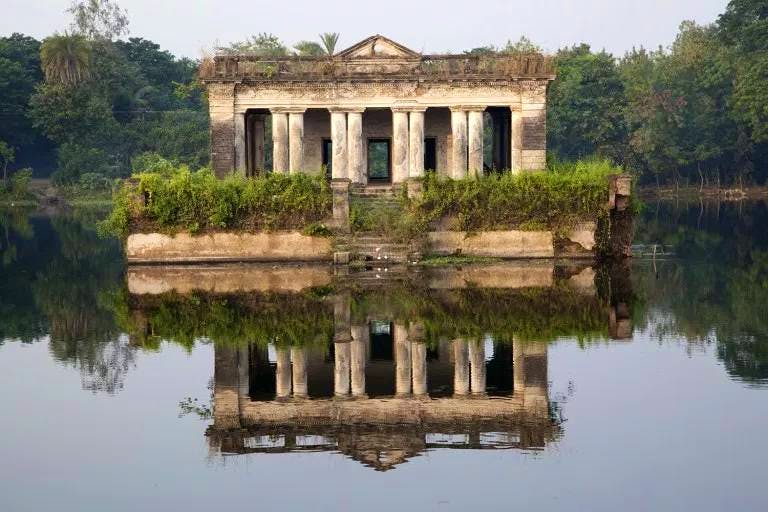
- Jan 25 2016
- Admin
- 12
- 3332
- Travel
NARAJOLE RAJ BAR
This is a tale of a royal dynasty in Paschim Medinipur, tucked away in oblivion ever since the abolition of the zaminadari system. Despite being sunk in obscurity, a foray into Narajole was an eye-opener, as the estate was replete with architectural gems and historical tales. Follow Team WHEELS on this drive tour and cherish the rich history of a bygone era. Narajole According to historian Suniti Kumar Chattopadhyay, the name ‘Narajole’ was derived from the term ‘Jola’ meaning ‘water’ and ‘Nara’ meaning the left over stub of paddy. We found justification of the name in the last leg of the drive, as large tracts of paddy fields and marshy land stretched on both sides of the road from Bakultala to Narajole..jpg)
Route The route is pretty simple. From Kona Expressway proceed straight ahead and then turn left to enter NH-6. Follow NH-6 and cross Dhulaghori, Uluberia, Kolaghat towards Kharagpur. From Mechogram Morh (12.5 km from Kolaghat junction) turn right into Panskura-Ghatal Road (State Highway 4) leaving NH-6 through an underpass, which is currently under construction. Thereafter, proceed forward towards Ghatal by Panskura-Ghatal Road. At around 24 km from NH-6, look for ‘Bakultala’ near Shyam Sundarpur. Take a left hairpin bend into a narrow road from Bokultala and drive for 16.5 km to reach Narajole Bazaar. From the junction at the bazaar turn right and proceed for another 600 meter to find the dilapidated royal arched gate on your right, guarding the Hawa Mahal. The entrance to the Narajole Rajbari is however, on the opposite side of the gate, a few metres through a kuccha road with a Shinghaduar and a Nahabatkhana to welcome the few visitors who come by. History Narajole is an ancient royal dynasty of Bengal. The royal family traces its origin to the era prior to British Raj. It is said that about 600 years ago, an ancestor, Uday Narayan went hunting in the dense forest. There, he saw an unbelievable sight - a crane was chasing a hawk and suddenly the entire place was lit up. That very night, Uday Narayan dreamt of an idol of Devi Joy Durga made of gold lying inside the jungle. Next morning, he went in search of the place he had dreamt of and found the idol of Joy Durga surrounded by valuable treasures. It was this idol, which was brought and still continues to be worshipped in the Joy Durga temple in Narajole thakurbari premises. Later on, Uday Narayan Ghosh encouraged people to settle down in that area and gradually the jungle was cleared for habitation. After Uday Narayan, Pratap Narayan became the king. The Narajole Fort was built by his son, Yogendra Narayan. His successor Bharat Narayan encouraged growth of agriculture in the area. Kirti Narayan, his son, further expanded the estate.

